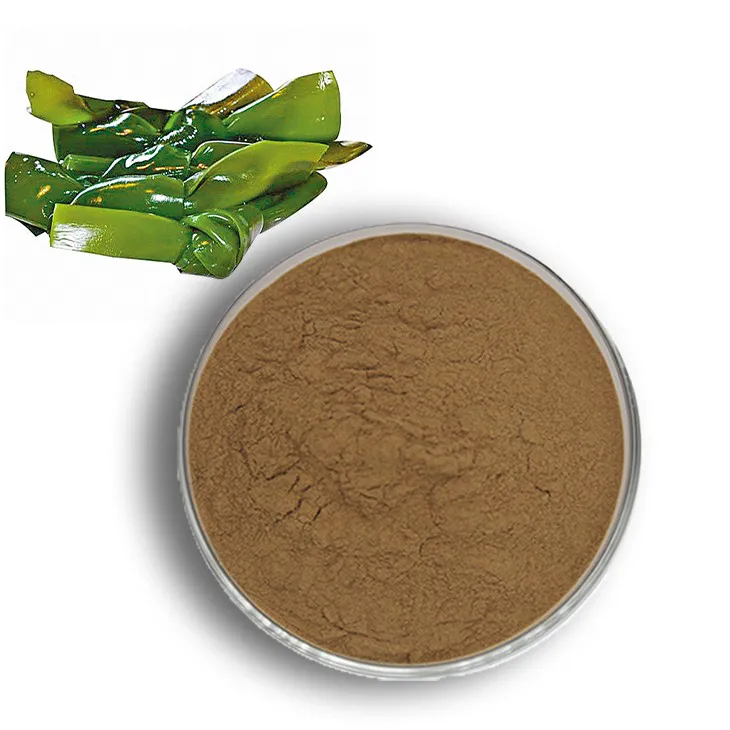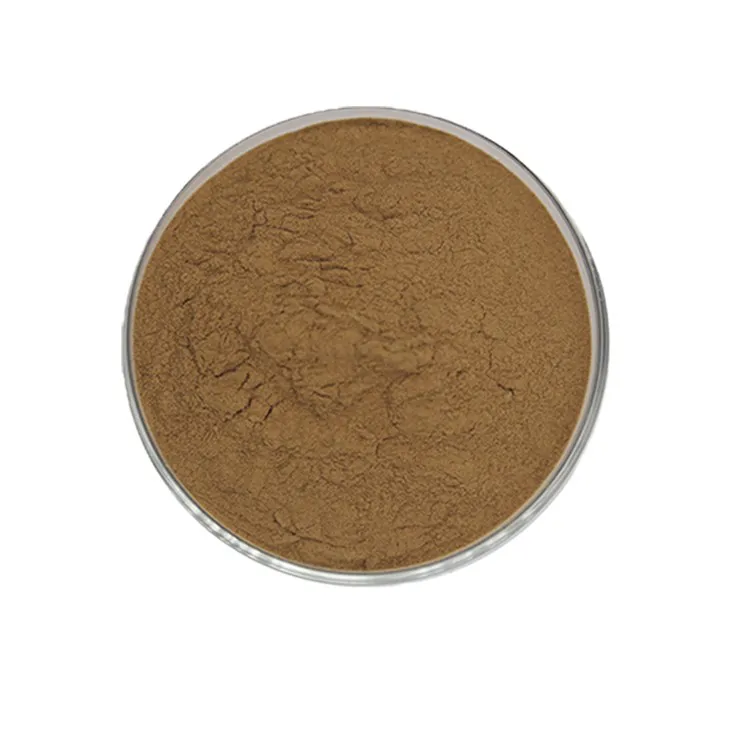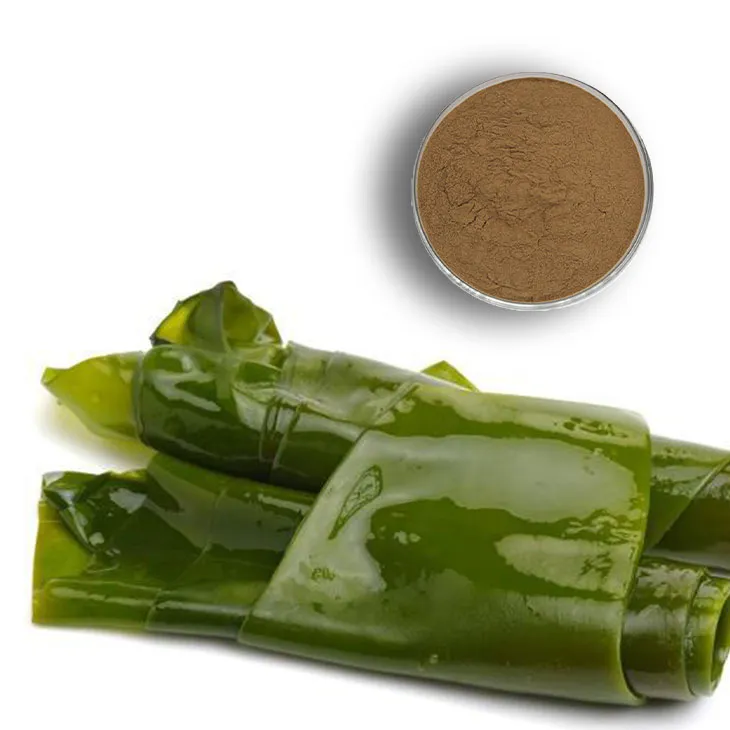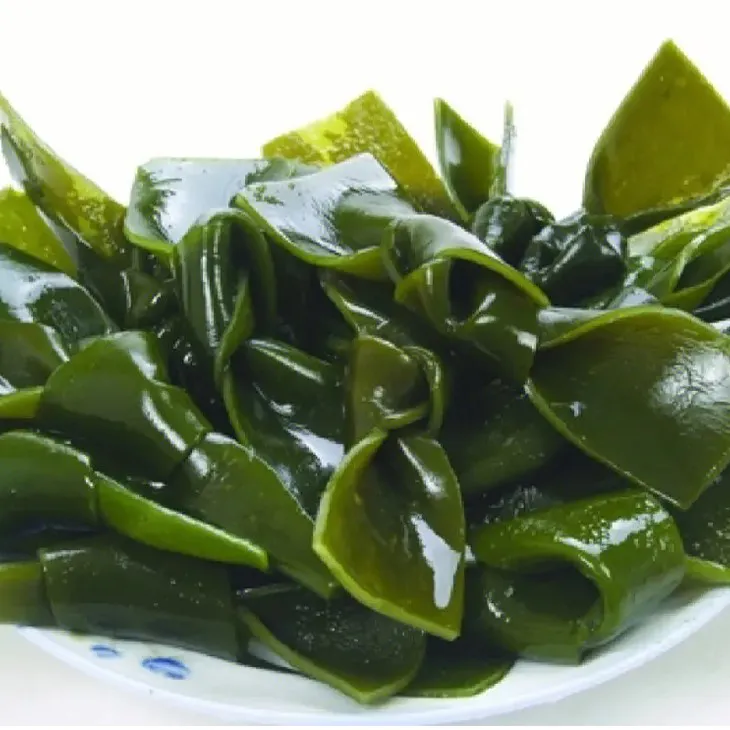- 0086-571-85302990
- sales@greenskybio.com
The process of extracting fucoidan from kelp in kelp extract powder.
2024-11-26

1. Introduction
Fucoidan is a sulfated polysaccharide that has attracted significant attention in recent years due to its various biological activities, such as antioxidant, anti - inflammatory, and anti - tumor properties. Kelp, a type of large brown seaweed, is a rich source of fucoidan. Extracting fucoidan from kelp powder is a complex process that involves multiple steps, each of which requires careful consideration and precise control.

2. Pretreatment of Kelp Powder
Purification: The first step in the extraction process is the pretreatment of kelp powder. Purification is a crucial part of this pretreatment. Kelp, as it is harvested from the ocean, may contain various impurities such as sand, shells, and other marine debris. These impurities can interfere with the extraction process and affect the quality of the final fucoidan product.
One common method of purification is washing. Kelp powder can be washed with clean water multiple times to remove water - soluble impurities. However, care must be taken not to wash away the fucoidan itself, as it is also somewhat soluble in water. Another approach is sieving, which can remove larger particles of impurities based on their size.
Drying: After purification, drying of the kelp powder may be necessary. Drying helps to reduce the moisture content in the kelp powder, which can prevent the growth of microorganisms during storage and subsequent extraction processes. There are different drying methods available, such as air drying, oven drying, and freeze - drying. Each method has its own advantages and disadvantages.
Air drying is a simple and cost - effective method, but it may take a long time and is subject to environmental factors such as humidity. Oven drying is faster but requires careful control of the temperature to avoid over - drying or damaging the kelp powder. Freeze - drying is a more advanced method that can preserve the structure and properties of the kelp powder well, but it is also more expensive.

3. Selection of Solvent System
The selection of a suitable solvent system is a critical step in the extraction of fucoidan from kelp powder. The solvent should be able to effectively dissolve fucoidan while minimizing the dissolution of other unwanted components in the kelp powder.
Aqueous Solutions: Aqueous solutions are commonly used solvents for fucoidan extraction. The pH of the aqueous solution plays an important role. For example, a slightly acidic to neutral pH range (around pH 5 - 7) may be suitable for some types of kelp. At this pH, fucoidan can be relatively stable and soluble, while some proteins and other substances may be less soluble.
However, different species of kelp may have different optimal pH values for fucoidan extraction. Some studies have found that in certain cases, a slightly alkaline pH (around pH 8 - 9) can also be effective in extracting fucoidan, especially when combined with other extraction enhancers.
Other Solvents: In addition to aqueous solutions, some researchers have also explored the use of other solvents or solvent mixtures. For example, ethanol - water mixtures have been investigated. Ethanol can help to precipitate some impurities while still allowing the extraction of fucoidan. However, the use of ethanol - water mixtures requires careful control of the ethanol concentration, as too high a concentration may reduce the yield of fucoidan.

4. Extraction Techniques
Once the solvent system is selected, extraction techniques are applied to separate fucoidan from the other components in the kelp powder.
4.1 Maceration
Maceration is a simple and traditional extraction method. In this process, the kelp powder is mixed with the selected solvent and allowed to stand for a certain period of time, usually several hours to days. During this time, the solvent penetrates the cells of the kelp powder and dissolves the fucoidan.
The advantages of maceration are its simplicity and low cost. However, it has some limitations. The extraction time is relatively long, and the extraction efficiency may not be as high as some other methods. Also, the extraction yield may be affected by factors such as the particle size of the kelp powder and the ratio of kelp powder to solvent.
4.2 Soxhlet Extraction
Soxhlet extraction is a more efficient extraction method compared to maceration. In this technique, the kelp powder is placed in a Soxhlet extractor, and the solvent is continuously recycled through the kelp powder. The solvent is heated to vaporize, then condensed and returned to the extraction chamber containing the kelp powder.
This continuous recycling of the solvent allows for a more thorough extraction of fucoidan. Soxhlet extraction can significantly reduce the extraction time compared to maceration and usually results in a higher extraction yield. However, it also has some drawbacks. The Soxhlet extraction equipment is more complex and expensive, and the high - temperature extraction process may cause some degradation of fucoidan if not properly controlled.
Ultrasonic - Assisted Extraction: In recent years, ultrasonic - assisted extraction has also been explored for fucoidan extraction from kelp powder. Ultrasonic waves can create cavitation bubbles in the solvent, which can disrupt the cell walls of the kelp powder and enhance the mass transfer of fucoidan from the cells to the solvent.
This method can significantly reduce the extraction time and improve the extraction efficiency compared to traditional methods. However, the equipment for ultrasonic - assisted extraction also requires investment, and the optimal ultrasonic parameters (such as frequency, power, and treatment time) need to be carefully determined for different types of kelp powder.

5. Purification after Extraction
After the extraction process, the obtained extract contains not only fucoidan but also other substances such as proteins, polysaccharides, and small - molecule impurities. Therefore, further purification steps are necessary to isolate pure fucoidan.
5.1 Filtration
Filtration is the first step in post - extraction purification. It is used to remove insoluble residues in the extract. There are different types of filtration methods available, such as gravity filtration, vacuum filtration, and membrane filtration.
Gravity filtration is a simple method that uses the force of gravity to pass the extract through a filter medium. Vacuum filtration can accelerate the filtration process by applying a vacuum. Membrane filtration, especially ultra - filtration, can selectively retain larger molecules (such as proteins) while allowing smaller molecules (such as fucoidan) to pass through, which can further purify the extract.
5.2 Chromatography
Chromatography is a more advanced purification method. There are several types of chromatography techniques that can be used for fucoidan purification, such as ion - exchange chromatography, size - exclusion chromatography, and affinity chromatography.
Ion - Exchange Chromatography: Ion - exchange chromatography is based on the differences in the charge properties of fucoidan and other impurities. Fucoidan is a sulfated polysaccharide and has a certain charge. By using an ion - exchange resin with opposite charges, fucoidan can be selectively adsorbed onto the resin while other uncharged or differently charged substances are washed away. Then, fucoidan can be eluted from the resin using an appropriate eluent.
Size - Exclusion Chromatography: Size - exclusion chromatography separates molecules based on their size. Fucoidan has a specific molecular size range. In size - exclusion chromatography, the extract is passed through a column filled with a porous matrix. Smaller molecules can enter the pores of the matrix and are retarded, while larger molecules (such as fucoidan) are excluded from the pores and elute faster.
Affinity Chromatography: Affinity chromatography utilizes the specific binding affinity between fucoidan and a particular ligand. For example, if a ligand that specifically binds to fucoidan is immobilized on a solid support, when the extract is passed through the column, fucoidan will bind to the ligand, and other substances will pass through. Then, fucoidan can be released from the ligand using an appropriate method.
6. Conclusion
The extraction of fucoidan from kelp powder is a multi - step process that involves pretreatment of kelp powder, selection of solvent systems, extraction techniques, and post - extraction purification. Each step requires precise control of various parameters, and a deep understanding of the chemical and physical properties of kelp powder and fucoidan is essential for obtaining high - quality fucoidan.
Future research may focus on developing more efficient and environmentally friendly extraction and purification methods, as well as exploring the potential applications of fucoidan in more fields such as medicine, cosmetics, and food.
FAQ:
What is the significance of pretreatment in the extraction of fucoidan from kelp powder?
Pretreatment is very important. It can purify the kelp powder and remove impurities. This helps to ensure the quality of the final product. Impurities may interfere with the extraction process or affect the purity of the extracted fucoidan.
Why are aqueous solutions with specific pH values often used as solvents in fucoidan extraction?
The chemical structure and properties of fucoidan make it more soluble or separable in aqueous solutions with specific pH values. Different pH levels can affect the interactions between fucoidan and other components in the kelp powder, facilitating the extraction process.
What are the advantages and disadvantages of maceration and Soxhlet extraction in fucoidan extraction?
Maceration is a relatively simple and gentle extraction method. It allows for a slow and thorough extraction but may take a longer time. Soxhlet extraction is more efficient in terms of extracting a large amount of fucoidan in a relatively short time, but it may require more complex equipment and may be more likely to cause some degradation of the target compound due to higher temperature or more intense extraction conditions.
How does filtration contribute to the purification of fucoidan after extraction?
Filtration is used to remove insoluble residues that are present in the extract. These residues may include unextracted parts of the kelp powder or other substances that did not dissolve during the extraction. By removing these, the purity of the fucoidan in the extract is increased.
What role does chromatography play in isolating pure fucoidan?
Chromatography can separate fucoidan from other substances based on their different chemical and physical properties such as molecular size, charge, or polarity. It provides a highly selective method to isolate pure fucoidan from the complex mixture obtained after extraction.
Related literature
- Fucoidan Extraction and Its Bioactive Properties from Different Seaweed Sources"
- "Optimization of Fucoidan Extraction from Kelp: A Review"
- "Advanced Techniques in Fucoidan Isolation from Kelp Extracts"
- ▶ Hesperidin
- ▶ citrus bioflavonoids
- ▶ plant extract
- ▶ lycopene
- ▶ Diosmin
- ▶ Grape seed extract
- ▶ Sea buckthorn Juice Powder
- ▶ Beetroot powder
- ▶ Hops Extract
- ▶ Artichoke Extract
- ▶ Reishi mushroom extract
- ▶ Astaxanthin
- ▶ Green Tea Extract
- ▶ Curcumin Extract
- ▶ Horse Chestnut Extract
- ▶ Other Problems
- ▶ Boswellia Serrata Extract
- ▶ Resveratrol Extract
- ▶ Marigold Extract
- ▶ Grape Leaf Extract
- ▶ blog3
- ▶ blog4
-
The best organic sugarcane extract.
2024-11-26
-
The best organic cocoa extract.
2024-11-26
-
Organic Non - GMO Camu - Camu Fruit Extract.
2024-11-26
-
Nature's Bounty Copaiba Extract.
2024-11-26
-
Calendula Extract
2024-11-26
-
Beetroot juice Powder
2024-11-26
-
Medicinal Marshmallow Extract
2024-11-26
-
Nettle Root Extract
2024-11-26
-
Ginger Extract
2024-11-26
-
Giant Knotweed Extract
2024-11-26
-
Tinospora cordifolia extract
2024-11-26
-
Pueraria Lobata Extract
2024-11-26
-
Moringa powder
2024-11-26
-
Yohimbine Bark Extract
2024-11-26





















